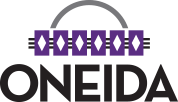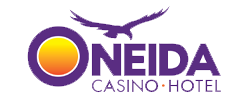By FELICIA FONSECA
Associated Press
FLAGSTAFF, Ariz. (AP) ~ The sweeping bill that President Donald Trump signed will help better equip health care systems that serve Native Americans, improve the emergency response time on tribal lands, provide economic relief for tribal members, and help with food deliveries to low-income families and the elderly.
Tribes have been lobbying Congress to help address shortfalls in an already underfunded health care system and to ensure the federal government fulfills its obligation to them under treaties and other acts. While the $10 billion for tribes in the $2.2 trillion package is less than they requested, tribes say it represents progress.
“The silver lining is perhaps in the future we will have resources and the ability to really change those chronic disease trends in a meaningful way so our communities aren’t impacted in such a devastating way in the future should something like this happen again,” said Jerilyn Church, chief executive of the Great Plains Tribal Chairmen’s Health Board.
More than $1 billion will go to the Indian Health Service, a federal agency that provides primary medical care for more than two million Native Americans. About half of that amount will go to tribes and tribal organizations that have contracts with the federal government to run their own health care facilities.
The Indian Health Service didn’t immediately respond to a request for comment Friday.
As of Thursday, the agency reported 110 cases of COVID-19 within the facilities it operates. The number doesn’t represent all cases in Indian Country because reporting by tribes and tribal organizations that receive IHS funding is voluntary.
The Navajo Nation has by far the most cases in Indian Country on its vast, 27,000-square-mile (70,000-square-kilometer) reservation in the Southwest with 115 confirmed cases and two deaths. Tribal officials have been delivering wood and coal to tribal members while encouraging them to stay home, a difficult task considering many drive long distances for basic necessities or live without them.
For most people, the coronavirus causes mild or moderate symptoms, such as fever and cough that clear up in two to three weeks. For some, especially older adults and people with existing health problems, it can cause more severe illness, including pneumonia and death.
Some health care clinics have closed and hospitals that serve Native Americans have scaled back services to focus on the coronavirus. Like the rest of the country, they’re facing severe shortages in supplies, like masks, gowns and nasal swabs. Tribes and tribal organizations had asked Congress to fund more equipment, more medical providers and temporary housing.
“As we are seeing in other state such as New York and California, the Navajo Nation will have to identify alternative facilities to house patients and, perhaps, health care workers, and provide the equipment and safeguards for protection and to prevent the further spread of COVID-19,” Navajo Vice President Myron Lizer said in a statement.
The Seattle Indian Health Board, which operates a clinic serving 5,000 people in Seattle, shuffled services and the way people enter the clinic to reduce the risk of exposure to the new coronavirus. It shut the clinic on Saturdays indefinitely because of staffing constraints but hopes to reopen it soon to serve children and pregnant women.
Many appointments have transitioned to being done remotely through phone or video conferencing _ a cost that likely will be covered under the federal bill, said board spokesman Aren Sparck.
“It’s peace of mind for our administration that all the changes we’ve had to make in our care that previously were unbillable might have a billing avenue,” said Sparck, from the Qissanamiut Tribe of the Native Village of Chevak in Alaska.
Tribes also will be eligible for federal loans to help pay tribal employees. Many have shut down casinos and tourism operations that serve as major sources of revenue.
The Cherokee Nation in Oklahoma has been paying 4,000 entertainment and hospitality workers despite the businesses being closed, putting a “real strain on our budget,” said Principal Chief Chuck Hoskin Jr.
The Senate bill didn’t initially have much for tribes, but negotiations between Democrats and Republicans led to the $10 billion _ $8 billion of which will help reimburse tribes for coronavirus-related expenses they’ve already incurred. It was designed to avoid what tribes consider cumbersome requirements of a funding package approved by Congress earlier this month.
“If there’s anything positive to say out of this, it’s people will learn a lot,” said Robert Anderson, a visiting law professor at Harvard University and a member of the Bois Forte Band of the Minnesota Chippewa Tribe. “When an emergency comes up, what do we do to make sure Congress thinks about Indian Country, and there’s equity in these bailouts.”
The $8 billion in the latest relief fund will be distributed by the Treasury Department, working with Native American tribes and the Interior Department based on need, according to New Mexico U.S. Sen. Tom Udall’s office. The $40 million earmarked for tribes in the earlier package is being distributed through a grant program under the Centers for Disease Control and Prevention, and tribes can start applying Monday.
More than a dozen of the country’s 574 federally recognized tribes that don’t have contracts to run federal programs on their reservations, for example, and more that don’t have the staffing or expertise to apply for grants potentially will be left on the sidelines.
Other provisions of the bill signed Friday allow tribes to be reimbursed for some unemployment benefits, and to access more funding for housing. The U.S. Bureau of Indian Affairs will receive more than $450 million to support teleworking and overtime costs, welfare assistance and social service programs, and to expand public safety and emergency response.
Money also is going to help child care providers, and to pay for staffing, transportation and cleaning at Bureau of Indian Education schools and tribal colleges.
___
Associated Press writer Sean Murphy in Oklahoma City contributed to this story.





